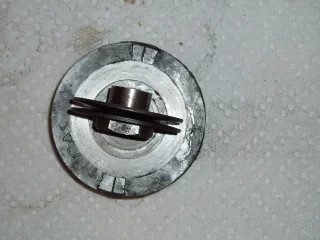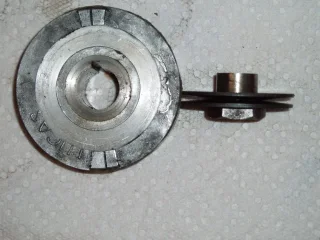rvich
VIP MEMBER
- Joined
- Jul 25, 2009
- Messages
- 3,189
I was working on getting the primary apart last night on my 850. I was puzzled when I took the rotor off as there is a large cupped washer behind it and the spacer had the groove facing toward the crank. On my 750 I clearly remember placing the groove out to allow the key to slide into place and I don't remember any large washer behind the rotor.
The large washer isn't showing on my parts list and as for the groove...am I missing something? Did I fabricate the memory? Everything seemed to line up fine before disassembly. It doesn't do me much good to catalogue how it came apart if it isn't right!
List of parts in order of disassembly would be:
rotor nut
cupped washer (cup toward rotor)
rotor w/key
cupped washer (cup toward rotor)
spacer (with groove but facing in)
shims (three)
This leaves the sprocket ready to pull off the crank.
Thanks,
Russ
The large washer isn't showing on my parts list and as for the groove...am I missing something? Did I fabricate the memory? Everything seemed to line up fine before disassembly. It doesn't do me much good to catalogue how it came apart if it isn't right!
List of parts in order of disassembly would be:
rotor nut
cupped washer (cup toward rotor)
rotor w/key
cupped washer (cup toward rotor)
spacer (with groove but facing in)
shims (three)
This leaves the sprocket ready to pull off the crank.
Thanks,
Russ




